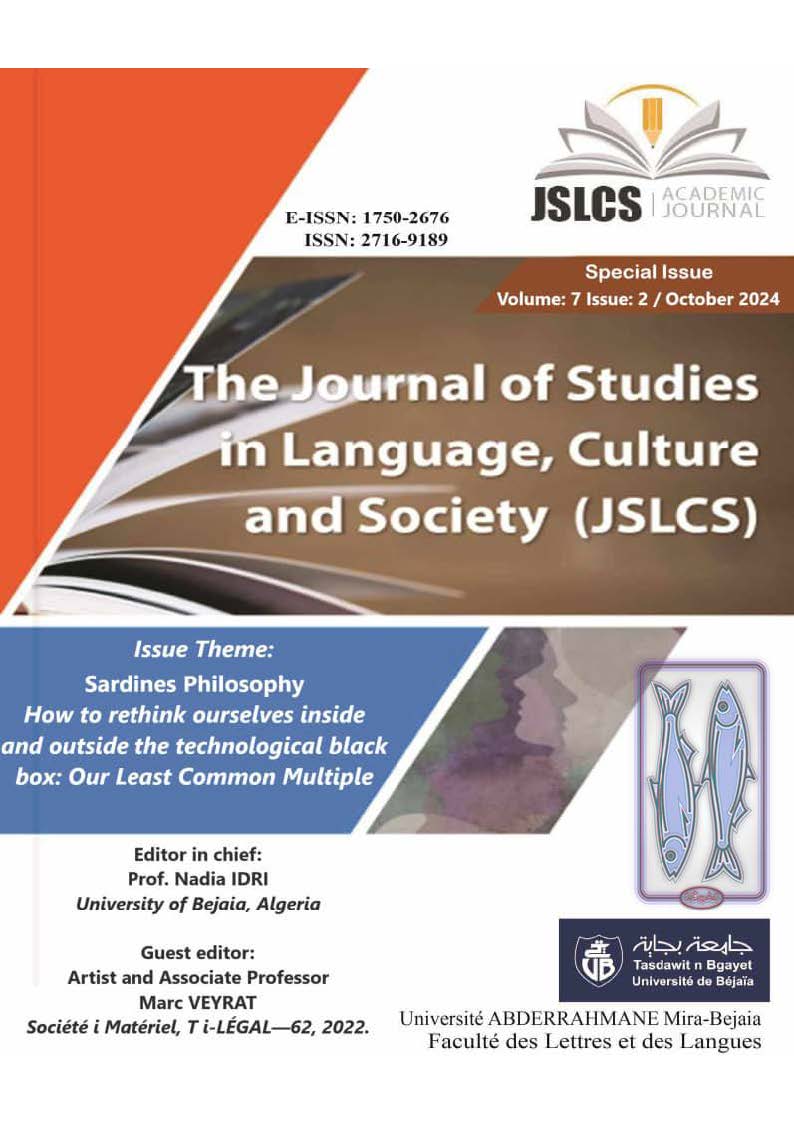Cultural References And Metaphors In Programming: The Symbolic Significance Of Variable Names And Comments In Code
Keywords:
Code readability, Cultural references in technology, Metaphors in coding, Naming conventions, Software development practicesAbstract
This paper investigates the symbolic significance of cultural references and metaphors in programming, focusing on their use in variable names and code comments. The study explores how personal anecdotes, naming conventions, and cultural artifacts are integrated into code through a comprehensive email survey of programmers and computer science professors, coupled with content analysis of existing codebases. The research reveals that these elements enhance code readability and memorability and foster a shared cultural context within development teams. Key findings highlight the use of mythology, literature, pop culture, historical references in naming conventions, as well as the impact of personal stories in comments on the codebase community. The study also examines the delicate balance between creative expression and maintaining code clarity, offering insights into best practices for incorporating cultural elements in programming. By illuminating the narrative and symbolic dimensions of coding practices, this paper contributes to a deeper understanding of the human and cultural aspects of software development, with implications for both professional practice and computer science education.
References
Agerri, R., Rehm, G., & Way, A. (Eds.). (2023). State of the art in language technology and language-centric artificial intelligence. In European language equality. Cognitive Technologies. Springer. https://doi.org/10.1007/9783031288197_2
Barker Scott, B. A., & Manning, M. R. (2022). Designing the collaborative organization: A framework for how collaborative work, relationships, and behaviors generate collaborative capacity. The Journal of Applied Behavioral Science, 60(1), 149–193. https://doi.org/10.1177/00218863221106245
BelEnguix, G., & Jiménez López, M. D. (Eds.). (2009). Language as a complex system: Interdisciplinary approaches. Cambridge Scholars Publisher.
Crosby, J. P. (2023). The business managers guide to software projects: A framework for decision-making, team collaboration, and effectiveness. Apress.
Defranchi, L. (2024, March 28). Different types of APIs explained: Styles, protocols, audiences + real-life examples. Axway Software. Retrieved June 30, 2024, from https://www.axway.com
Dufva, T., & Dufva, M. (2016). Metaphors of code: Structuring and broadening the discussion on teaching children to code. Code Literacy, 1(1), 1–18. http://dx.doi.org/10.1016/j.sc.2016.09.004
Eringa, K., Caudron, L. N., Rieck, K., Xie, F., & Gerhardt, T. (2015). How relevant are Hofstede’s dimensions for inter-cultural studies? A replication of Hofstede’s research among current international business students. Research in Hospitality Management, 5(2), 187–198. https://doi.org/10.2989/RHM.2015.5.2.10.1283
Gabbrielli, M., & Martini, S. (2023). Programming languages: Principles and paradigms. Springer Cham. https://doi.org/10.1007/978-3-031-34144-1
Harris, R. A. (2021). Rules are rules: Rhetorical figures and algorithms. In R. Loukanova, P. L. Lumsdaine, & R. Muskens (Eds.), Logic and algorithms in computational linguistics (pp. 217–259).
Hofstede, G. (2001). Culture’s consequences: Comparing values, behaviors, institutions, and organizations across nations (2nd ed.). Sage Publications.
Jan, J., Alshare, K. A., & Lane, P. L. (2024). Hofstede’s cultural dimensions in technology acceptance models: A meta-analysis. Universal Access in the Information Society, 23, 717–741. https://doi.org/10.1007/s10209022009307
Larsson, A., & Stolpe, K. (2023). Exploring the metaphoric nature of programming teachers' reflections on action: A case study with teaching in mind. Pedagogical Concerns in Programming Education, 23(1), 1–12. https://doi.org/10.1007/s1079802302826w
Mortara, J., Collet, P., & Dery Pinna, A. M. (2024). Visualization of object-oriented software in a city metaphor: Comprehending the implemented variability and its technical debt. Journal of Systems and Software, 208, 111876. https://doi.org/10.1016/j.jss.2023.111876
Moreno Lumbreras, D., Gonzalez Barahona, J. M., & Cosentino, V. (2024). The influence of the city metaphor and its derivatives in software visualization. Journal of Systems and Software. https://doi.org/10.1016/j.jss.2024.04.002
Nayebi, M., & Ruhe, G. (2015). Analytical product release planning. In C. Bird, T. Menzies, & T. Zimmermann (Eds.), The art and science of analyzing software data (pp. 551– 574). Elsevier Inc.
Romano, S., Capece, N., & Lanza, M. (2019). On the use of virtual reality in software visualization: The case of the city metaphor. Information and Software Technology, 112, 48–61. https://doi.org/10.1016/j.infsof.2019.05.009
Tabanakova, V., Kokorina, Y., & Fedyuchenko, L. (2023). Contemporary modification of interdisciplinary scientific knowledge. In E. Isaeva & Á. Rocha (Eds.), Science and global challenges of the 21st century – Innovations and technologies in interdisciplinary applications. Perm Forum 2022. Lecture Notes in Networks and Systems, vol. 622 (pp. 115–126). Springer. https://doi.org/10.1007/9783031280863_10








